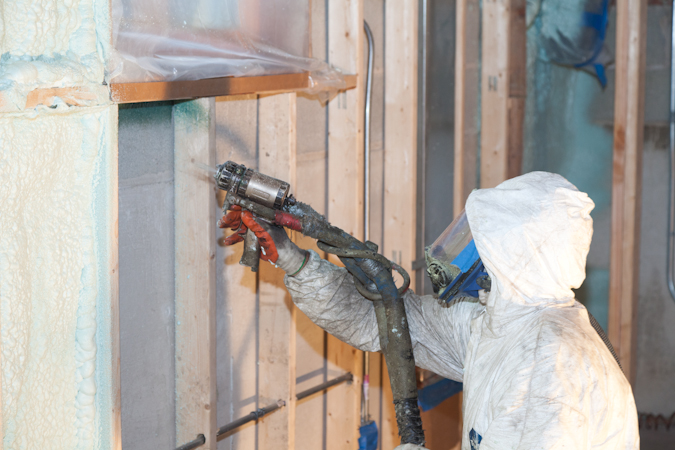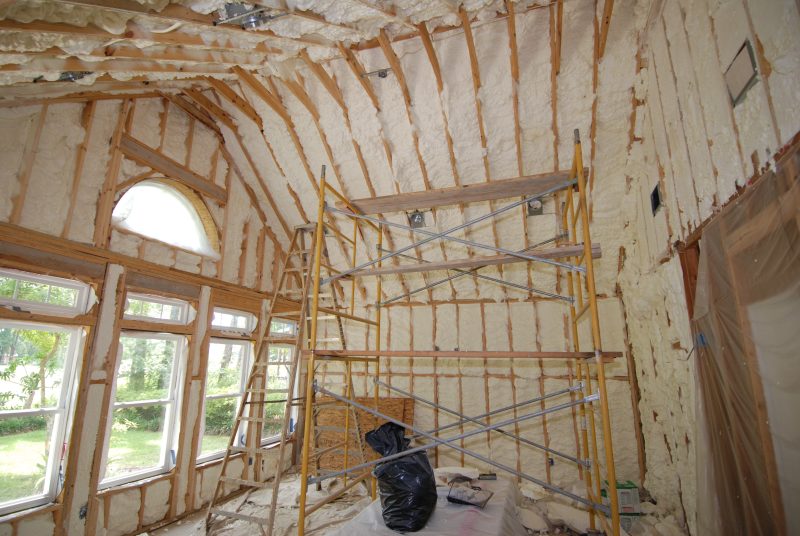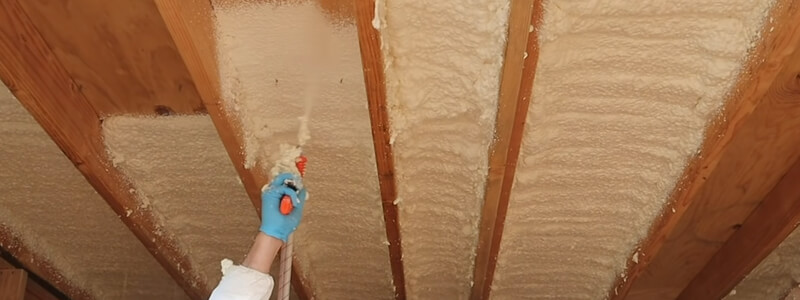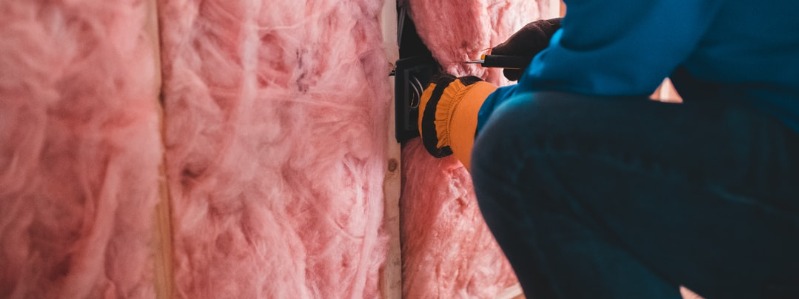What’s the Cost of Insulation in Texas?
Contents
- What’s the Cost of Insulation in Texas?
Remodeling any part of your home is a great time to add insulation to walls, ceilings or the attic. Insulation provides a fantastic return on investment because it will immediately lower your utility bills for both heating and cooling. The additional money spent on home remodeling costs can be paid back in just a few years. In this Remodeling Cost Guide, you’ll discover what your options are for insulation, their pros, and cons, and what your prices might be as well. Our goal is to help you evaluate your options and choose the one that meets your budget and your purposes.
The cost of insulating a home depends on a variety of factors, such as the size of the home and the type of insulation used. Generally speaking, most homeowners spend between $1,000 and $3,500 to have their homes professionally insulated.
The cost can be affected by the type of insulation used. For example, fiberglass batts are one of the least expensive options and typically cost around $1 per square foot for installation.

Spray foam insulation is more expensive but provides better coverage and a higher R-value (a measure of thermal resistance). The average price for spray foam insulation is around $2 per square foot installed.
The size of the home also affects the cost significantly. Smaller homes may require less material and labor to insulate than larger homes, so costs will vary accordingly. It’s always best to get an estimate from an experienced contractor who can provide an accurate assessment of your needs and provide you with an estimate for the project.
How much does house insulation cost?
For a home with 3,000 square feet, the average cost of insulation is between $4,500 and $14,000, or between $1.60 and $5.10 per square foot. The price to insulate a 1,500-square-foot home might range from $1,500 to $7,500.
Add $200 to $500 for labor on a professional installation, and you’re talking about $350 to $1,000 for 6 hours of work.
It might surprise you to learn that remodeling or re-insulating a home might pay for itself after just a few years of lower electricity costs. Despite having a lengthy lifespan, insulation eventually wears out. If you live in an older home, you might discover that updating the insulation lowers your heating and cooling costs significantly.
Types of Home Insulation
There are quite a few types of insulation in use today. This guide covers the most common types used, which account for 90% of all insulation installations.
Fiberglass Insulation Cost
This remains a popular insulation because it is affordable, effective, and easy to install. It is made into batting for installation in walls and ceilings and in rolls for use in open attics. The R-Factor for 1” of fiberglass insulation is 3.0-4.5. It is available in several different widths to match the standard spacing of studs and joists. On the downside, it can’t be added to walls without removing the drywall. Also, it must be fitted correctly because any gaps will reduce its insulating value. In cold climates, you will also need to install a moisture barrier since wet fiberglass doesn’t insulate as well.
- This is the most widely known type of insulation material.
- A blanket roll may be composed of materials like fiberglass or any other plastic fibers.
- It can be easily cut to be installed on smaller areas of the house.
- This is best applied on surfaces with larger areas of coverage.
- It is usually placed in between beams, studs, and joints.
One of the disadvantages of using fiberglass blanket rolls is that glass fibers may irritate your eyes, lungs, or skin. Another is that if it is not handled carefully, the material may be easily ripped or torn apart.
Fiberglass insulation prices start at about $0.50 per square foot in standard 2”x4” construction.
Spray Foam Insulation Cost
Spray Foam has an excellent R-value. Depending on the brand and quality, the R-Factor is 3.4-6.5 for 1” thick insulation. It can be installed in existing walls through a small hole inserted into the wall. It works well anywhere and is ideal for small nooks and crannies that are hard to fill with fiber-type insulation. It won’t settle over time, either, as some loose types of insulation can do in walls, leaving a gap at the top. It is also popular for use as basement or crawlspace insulation.

- Insulation is measured by its resistance to conductive heat flow. This is done by rating it with its thermal resistance, also called R-value. Having a higher R-value means the material has a better insulating capability.
- Open-cell spray foam has an R-value within the range of 3.6 to 3.8 per inch.
- The material is soft and has a low density.
- It is best utilized for interior applications.
Spray foam insulation requires a professional installer, and the cost starts at about $2 per square foot in 2”x4” construction.
Rigid Foam Insulation Cost
With an R-value of 3.9 to 6.5 per 1” thickness, this insulation is very effective. It’s ideal for use on exterior walls and foundations and in a basement or crawl space. Some homeowners use it in conjunction with other types of insulation – it’s very versatile. The concern about it is that it doesn’t fill small cavities well.

- Closed-cell spray foam produces a material that is rigid with a medium density. It has a closed composition of cells, which makes it a better option to keep moisture out.
- The R-value of closed-cell spray foam can be more than 6.0 per inch.
- It can be used internally or externally.
Rigid foam insulation is fairly affordable, starting at about $0.70 per square foot for 1” foam.
Blow-In Cellulose Insulation Cost
This is usually made from recycled newspaper and other wood fiber that is treated to make it a good insulator. It can be installed in garages, attics, and walls. The chemicals used to treat it are water and fire-resistant.
- This type of insulation material is made from small pieces of fiberglass, mineral wool, or cellulose.
- The material is blown into the wall cavities or areas that have very small openings.
- Since the materials used may be made from fiberglass, the possibility of irritations to the lungs, skin, or eyes may happen.
This insulation can be installed professionally or with the use of rented equipment from a home improvement store. The cost when installed by a professional is about $1 per square foot in 2”x4” construction. That’s about $0.15 per square foot for every inch when used in attics. For example, a 4-inch layer would cost $0.60 per square foot.
Foam board
- Foam boards are insulation materials that may be composed of polyurethane, polystyrene, or polyisocyanurate.
- This may be placed anywhere in the house. These can be specifically placed on wall sheathings.
- This provides good thermal resistance to the house.
Fibrous boards
- These are used for insulating air ducts. This is one of the better options to be placed in areas with high temperatures.
- A fibrous board can be made from mineral wool or fiberglass.
- It may have a thickness range between 1” to 2.5”.
Concrete block
- This type of insulation material can be placed in front or at the back of a wall.
- It is complicated to install concrete blocks. There may be a need for professionals to apply this type of insulation material.
Reduces Noise
If you want to maintain your house as a quiet zone, especially if you have a new baby or senior citizens along with rambunctious older kids, then it is best to move all the noisy stuff outside. And, what better place than the garage? Whether it is a woodworking project or you’re putting together a band, having a well-insulated garage means you can move it to the garage irrespective of what time of the year it is. You won’t get complaints from the neighbors or from your own family because they won’t be able to hear all the din you make.
If you live on a busy street, effective insulation will also keep outdoor noise from vehicles to a minimum. No more honking cars and the noise of snow-blowers to disturb your quiet.
Garages Need Insulating Too.
Irrespective of whether your garage is large or small; insulating a garage is important if you want to save on energy costs. This is because blocking out air that seeps into your garage will help keep the temperature at a comfortable level throughout the year.
In most cases, your garage stores not only your expensive cars but you also use it to store cost equipment. A poorly insulated garage can not only damage them but it can also cause issues in the rest of your house too. Did you know that insulating a garage costs much less than insulating other areas of your home? Insulating a garage ceiling or even the walls acts as an effective moisture barrier.
How Do You Know If Your Garage is Thoroughly Sealed
You can start by inspecting the garage. Are there gaps or spaces that aren’t filled? The caulk needs to be drywalled to the floor or to other pieces of drywall. Use weather-stripping material between the garage door and any other doors that allow entry into the house.
Since you are already investing in installing insulation, go one step further to ensure precaution against fire. Consider the door that allows you access to and from the garage. Metal doors are your best bet in case of a fire happening in your garage. It also pays to examine for leaks, old electrical outlets, and cracked windows and get them repaired at the earliest opportunity.
Experienced professional insulators know what boxes to tick when it comes to ensuring that your home is not only well insulated but that it is safe from potential hazards as well. Ensure that your garage and everything it holds is well protected from the outside weather.
DIY Installation of Insulation or Hire a Pro?
Fiberglass insulation is the easiest to install, though you should wear protective clothing and a dust mask. Rigid foam insulation and blown-in cellulose are a bit more challenging but can be a DIY project for handy homeowners. The cost savings can be very good.
For fiberglass batting, you’ll need a staple gun and a cutting tool. For rigid foam, a cutting tool and construction glue are needed, along with a tape measure. To install blown-in insulation, you’ll have to rent the equipment required as well as have access to a water connection such as a hose. The cellulose insulation is mixed with water and blown into the cavity wet. It must be fully dry before covering it with drywall.
If you would prefer to hire a professional to install your insulation, consider getting at least 3 written estimates, and you might also want to get prices for different types of insulation. This will help you decide which one is best for your home.
Having adequate insulation is the best way to keep your heating and cooling bills under control. It is a cost-effective way to save money throughout the year.
Insulation Contractor
Anyone can insulate your garage, even your local insulation contractor but that does not always mean they do it right. It is important to ensure that your garage is sealed completely after the installation of insulation.
When Should I Replace My Insulation?
Unexpectedly, insulation has a substantially longer lifespan. House wrap, spray foam, and wrap tape, according to InterNACHI, can endure up to or even longer than 80 years. Rock wool, cellulose, loose fill, foam board, and fiberglass can all last for more than a century. These parameters, though, only apply to insulation under optimal conditions. The material’s lifespan may be drastically reduced if the insulation is installed in a less-than-ideal environment.
The caliber and efficacy of your home’s insulation can be significantly impacted by specific circumstances. Water damage is one of the most frequent reasons why insulation degrades. Insulation can progressively deteriorate over time as a result of foundation or roof leaks as the water damages the material.
Mold can form as a result of moisture from leaks, which reduces the effectiveness and even risks of insulation. As loose-fill insulation settles over time, air leaks may develop. Just 15 to 20 years after installation, cellulose or fiberglass batt insulation frequently falls off ceilings or crawl areas. The efficacy of your home’s insulation can also be impacted by regular filth and dust.
Final Word
Insulating your home is an investment that will pay off in the long run. It can help you save money on energy bills, increase your home’s value, and make it more comfortable year-round. However, the cost of insulating a home varies depending on the type and amount of insulation needed. The best way to accurately determine the cost for your particular project is to get a professional assessment and estimate from an experienced contractor.
Frequently Asked Questions
Is it expensive to insulate a garage?
Spray foam insulation is certainly an expensive investment but insulating a garage is not as costly as other areas of the house or building. Secondly, an insulation installation if done right last for over 25 years.
If one doesn’t live in a garage, how does it help insulate the area?
There are several reasons. A garage may be used as a storage area that could invite pests and other allergens. A good insulation contractor will tell you how insulating garage ceilings and walls can prevent emissions from carbon monoxide and other poisonous gases. If unchecked this can be potentially fatal.
Does spray foam insulation provide a calmer space?
Yes. In fact, compared to fiberglass, spray foam insulation has more density. Since it is effective in sealing the space completely including tiny cracks and gaps, it works as an effective sound dampener. This ensures that you can undertake loud activities in the garage without disturbing the rest of your family members or even neighbors.
You can also use the garage for any work that requires concentration since insulation also effectively blocks outside sounds from coming in.
What areas in a garage mostly require insulation installation?
Ceilings, walls, wiring, electric outlets, and even plumbing for that matter. If you use your garage as a storage area, seepage of water, ice damming, fungi and mold could be detrimental.
If you experience that your garage has a different temperature than the other rooms, or if the ceiling and walls are colder when you touch them, it is time to get in the insulation installation service providers.

